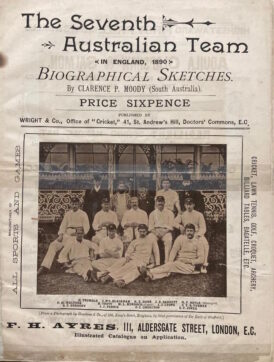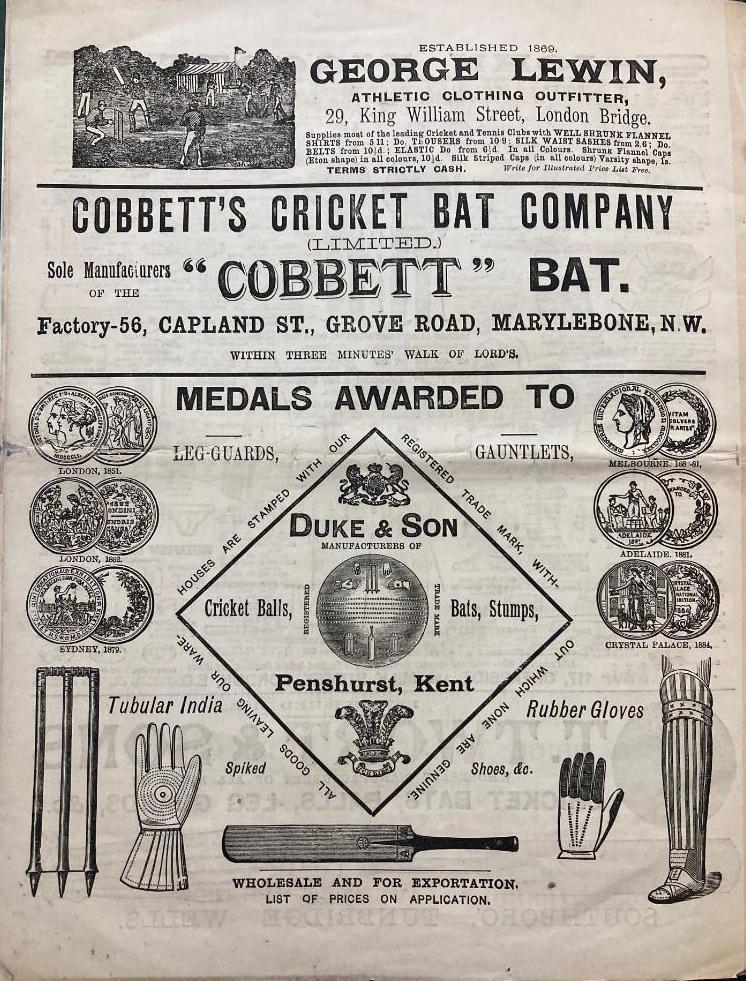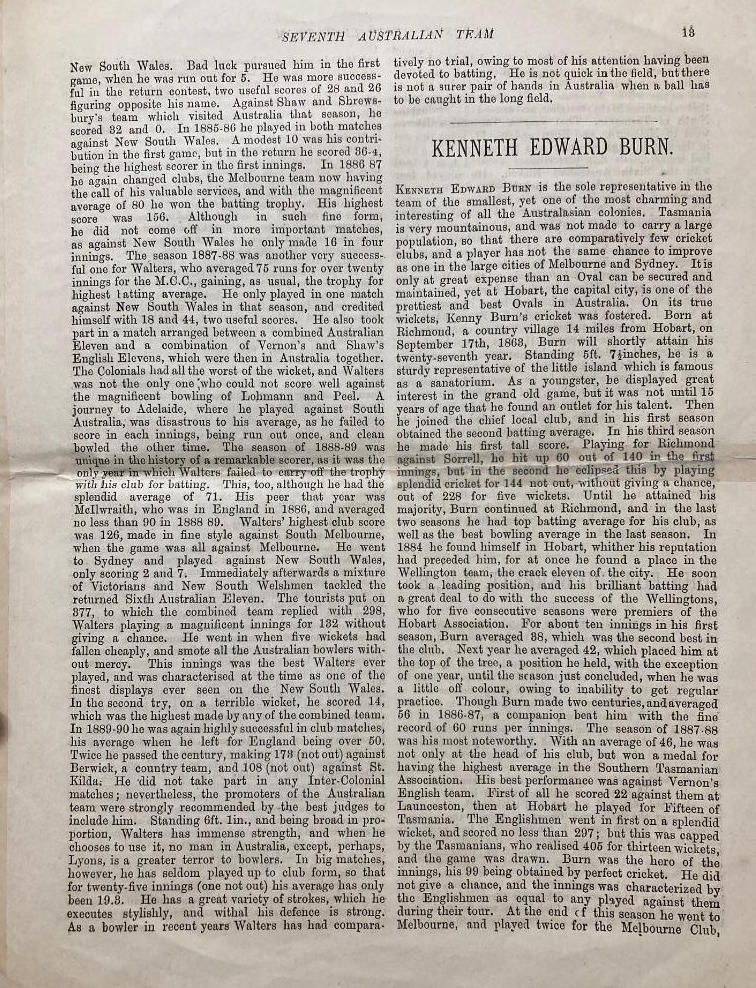Clarence Moody and the First Tour Brochure
Martin Chandler |
The first overseas tour was to North America, back in 1859. The English side, a strong one containing such luminaries as the captain George Parr, John Wisden and William Caffyn, were accompanied by Fred Lillywhite of the famous family, who organised the trip and afterwards published the first tour account.
After that regular trips from England to Australia and Australia to England began, and the first Test match was played in Melbourne in 1877. A number of contemporary accounts of those trips appeared, and there have been other retrospective accounts since.
Tour books have, over the years, become one of the favoured targets of cricketing bibliophiles as have the the related subject of pre tour brochures. By their nature slimmer and more ephemeral such brochures, originally intended primarily as a vehicle to introduce the tourists to a wider audience, have proved to be at least as collectable as the tour accounts that would appear later.
As the twentieth century wore on the tour brochure changed and became what amounted to a glossy magazine, almost a book in itself. There was plenty to read, but they lost their charm, and after the 1970s became something else.
Over the years, as I acquired more and more books, I started to collect the brochures as well. Like books the general rule is the older a brochure is the rarer and more expensive it becomes, so when was the first?
It wasn’t a question that occurred to me until recently, but as one or two from the 1890s came within reach it became something I needed to know. The answer is, of course, in the game’s bibliography and a quick look through the various incarnations of Padwick gave me the answer. The first was for the 1890 Ashes contest.
There were three Tests scheduled for 1890, and the thirteen man Australian party had, by 21st century standards, an eye watering 34 First Class fixtures arranged. No one has ever written an account of a tour in which England won at Lord’s and the Oval and the third Test was (at Old Trafford) abandoned without a ball bowled. The rival captains were two men who would become good friends, Billy Murdoch and WG Grace.
In 1890 there was one established cricketing periodical in England, Cricket: A Weekly Record of the Game had begun in 1882. From the off there was a link between what is more widely known simply as Cricket, with a journalist in Australia, Clarence Moody.
Moody, a South Australian, generally wrote on cricket under the byline of Point. He had been born in 1867, the son of a printer, so it was no surprise that he began working for his father’s newspaper in 1881 and from 1889 wrote on cricket. He also covered politics and Australian Rules Football (as Goalpost).
Moody came to England in 1890 with Murdoch’s team, and at the start of the tour Cricket’s publisher issued their landmark brochure, The Seventh Australian Team in England 1890, sub-titled Biographical Sketches.
The brochure consists of 20 pages, including the front and rear covers. There is a single team photograph on the front cover, and that apart the first four pages and the last four are advertising. All the advertisers are suppliers of sporting goods, amongst them a familiar name, Dukes.

The remaining twelve pages comprise biographies of the thirteen players, and a rather shorter one of manager and former Test player Harry Boyle. The ‘sketches’ are genuine pen portraits and not the the short introductions that were to become the norm in years to come. By far the most interesting, and the one that immediately caught my eye, is that of Ken Burn.
I remember the Burn story from my childhood. A Tasmanian, legend has it (confirmed in Wisden so it must be true) Burn was supposedly selected as reserve wicketkeeper only to, somewhere on the trip over to England, admit he had never kept wicket in his life. Having read Moody on Burn I have to say that it seems to me that Wisden may well have been sold a pup with that story, and that editor Sydney Pardon really should have spoken to Moody, or at least read his brochure.

Moody went on to write four cricket books. The most significant appeared in 1894, Australian Cricketers 1856-1894. Essentially an anthology Moody’s book also contained a list of Test matches between England and Australia which has been accepted as definitive ever since. In the book he also revived the idea of contests between the two countries being for ‘The Ashes’.
The remaining three Moody titles all appeared in 1898. One was George Giffen’s autobiography, With Bat and Ball, which Moody ghosted. South Australian Cricket: Reminiscences of Fifty Years was another, this time a collection of articles that had originally appeared in the Adelaide Observer and South Australian Register newspapers. It is a book that the current noted Australian historian Bernard Whimpress felt sufficiently important to justify the publication of a facsimile edition of eighty copies in 2016.
For many the best of Moody’s contributions to the literature of the game is Cricket Album: Noted Australian Players. This was, in the manner of a handful of contemporary English publications, originally published in weekly parts and then bound together. It is not as large as Alcock’s Famous Cricketers and Cricket Grounds, or CB Fry’s Book of Cricket, nor as substantial as Cross-Standing’s Cricketers of Yesterday and Today. It is however a thing of beauty, printed on high quality paper and well worth investing in comprising photographs of the leading Australian cricketers of the day accompanied by brief pen pictures.
After that burst of activity there were to be no further books from Moody, although he continued writing for newspapers. In that respect ventures of his own in Adelaide were not successful, and after the Great War Moody moved to Sydney where he joined the Sydney Sun. He died aged 70 in 1937.






Leave a comment